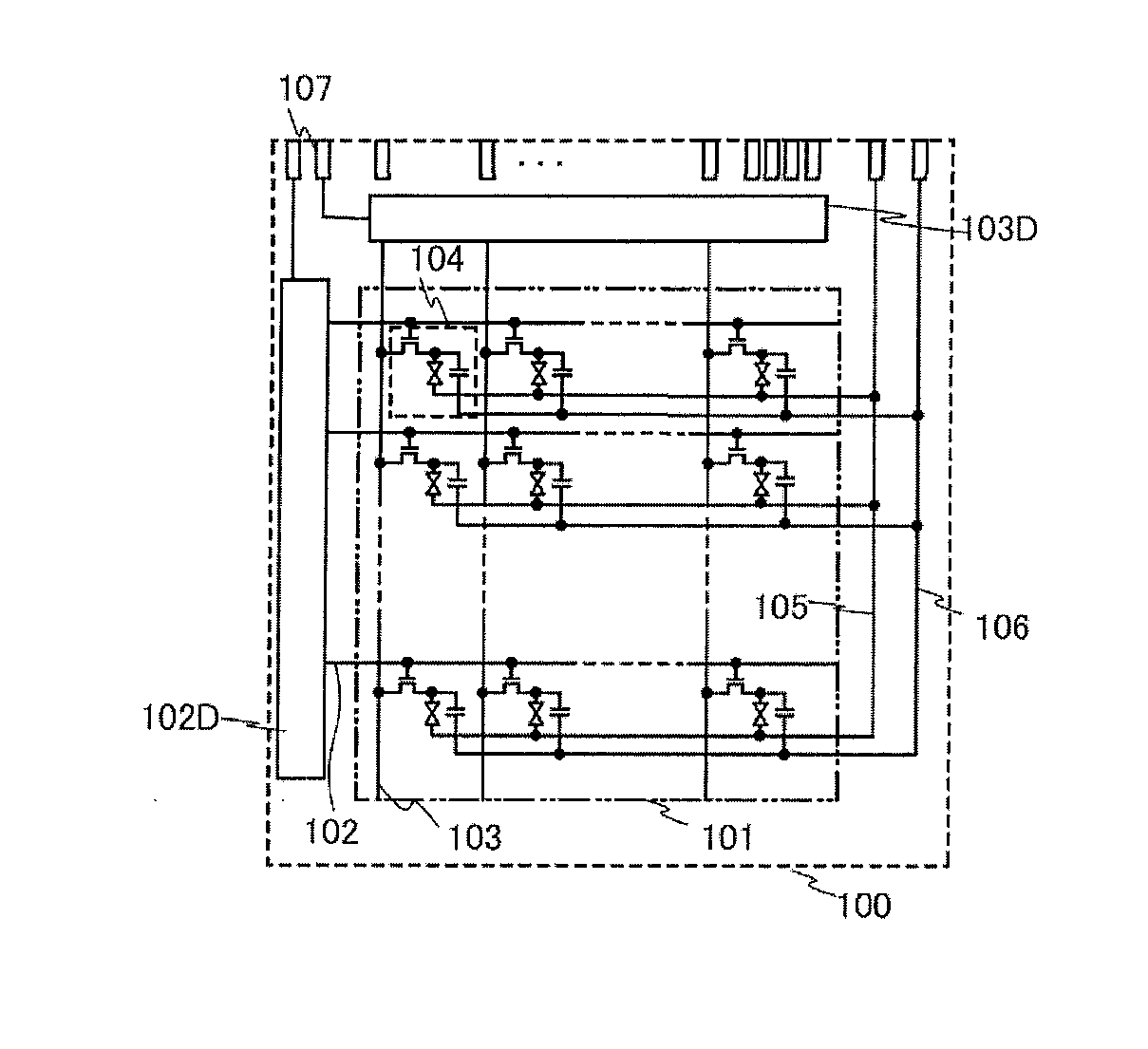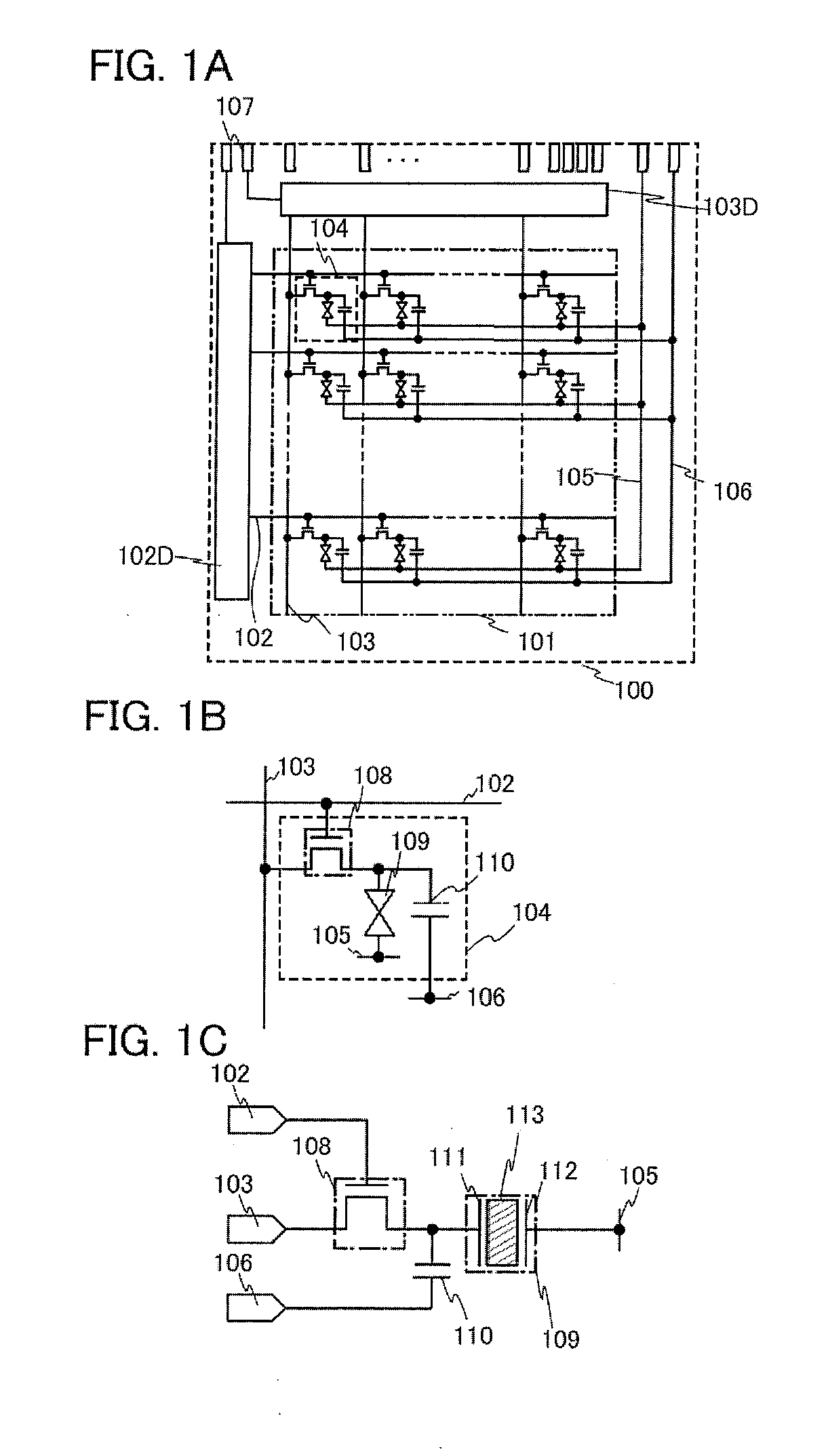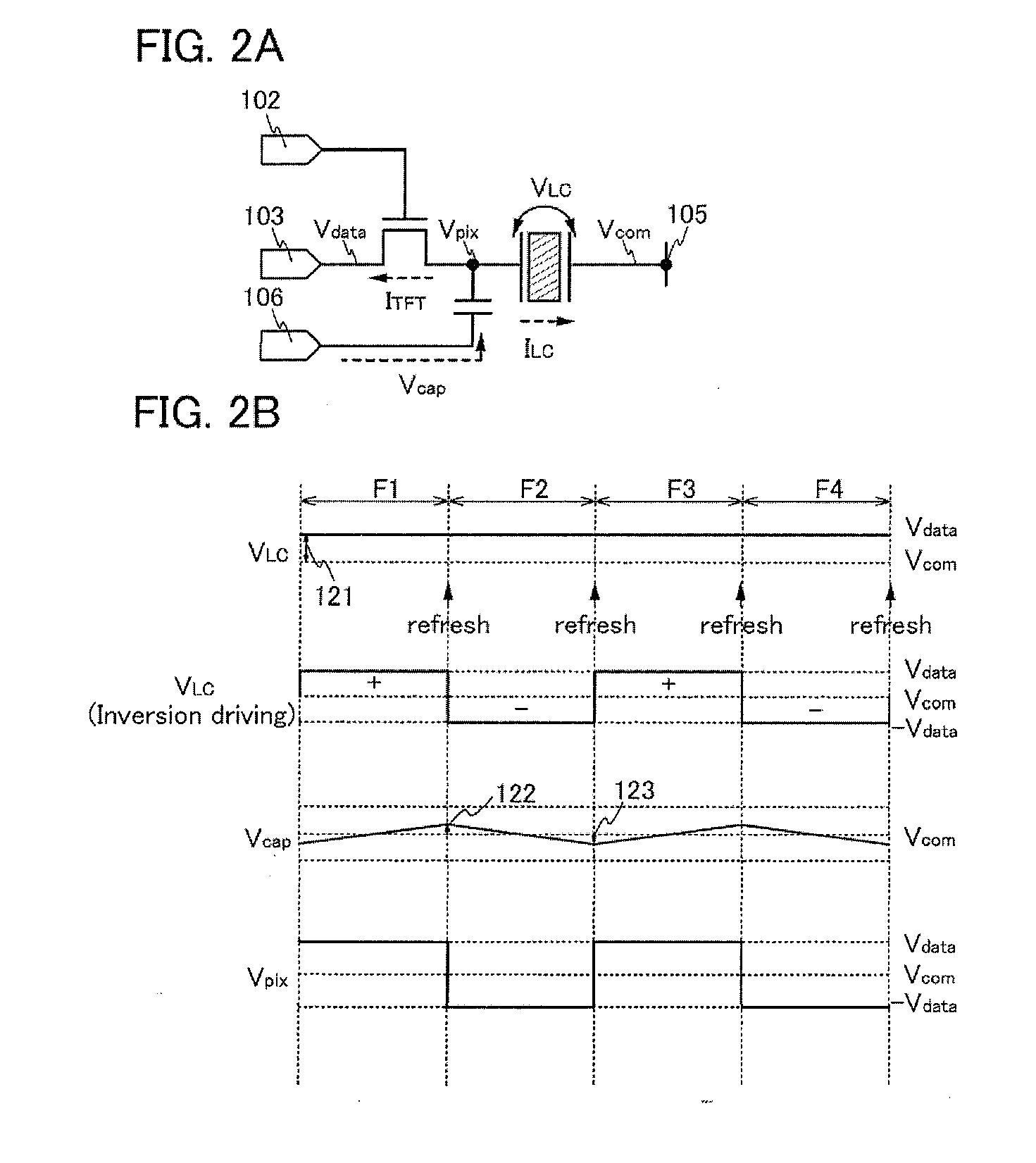Method for driving liquid crystal display device
a liquid crystal display and display device technology, applied in the direction of electric digital data processing, instruments, computing, etc., can solve the problems of display image deterioration, inability to keep the voltage constant between the pixel electrode and the common electrode in some cases, etc., and achieve the effect of suppressing the deterioration of the displayed imag
- Summary
- Abstract
- Description
- Claims
- Application Information
AI Technical Summary
Benefits of technology
Problems solved by technology
Method used
Image
Examples
embodiment 1
[0039]For explaining this embodiment, FIG. 1A illustrates a schematic diagram of a display panel in a liquid crystal display device. A display panel 100 in FIG. 1A includes a pixel portion 101, a gate line (also referred to as a scan line) 102, a signal line (also referred to as a data line) 103, a pixel 104, a common electrode 105, a capacitor line 106, a terminal portion 107, a gate line driver circuit 102D, and a signal line driver circuit 103D.
[0040]Note that FIG. 1A illustrates the structure in which the gate line driver circuit 102D and the signal line driver circuit 103D are provided over the display panel 100; as in FIG. 14A, the gate line driver circuit 102D and the signal line driver circuit 103D are not necessarily provided over the display panel 100. When the gate line driver circuit 102D and the signal line driver circuit 103D are provided over the display panel 100, the number of terminals in the terminal portion 107 can be reduced and the size of the liquid crystal di...
embodiment 2
[0066]In this embodiment, a structure different from the structure described in Embodiment 1 will be described.
[0067]Embodiment 1 describes the structure for frame inversion driving illustrated in FIG. 6A; this embodiment explains source line inversion driving in which inversion driving with the polarity inverted per signal line is performed as illustrated in FIG. 6B, gate line inversion driving in which inversion driving with the polarity inverted per gate line is performed as illustrated in FIG. 6C, and dot inversion driving in which inversion driving with inverted polarity is performed between adjacent pixels as illustrated in FIG. 6D, by using a circuit configuration of a pixel, and the like. Note that the part of the same description as that in Embodiment 1 is not repeated. Operation for common inversion driving is the same as that for frame inversion driving; therefore, description of common inversion driving is omitted. Note that FIGS. 6A to 6D illustrate examples in which im...
embodiment 3
[0074]In this embodiment, an example of a transistor that can be applied to a liquid crystal display device disclosed in this specification will be described.
[0075]FIGS. 9A to 9D each illustrate an example of a cross-sectional structure of a transistor.
[0076]A transistor 410 illustrated in FIG. 9A is a kind of bottom-gate structure thin film transistor and is also called an inverted staggered thin film transistor.
[0077]The transistor 410 includes, over a substrate 400 having an insulating surface, a gate electrode layer 401, a gate insulating layer 402, an oxide semiconductor layer 403, a source electrode layer 405a, and a drain electrode layer 405b. An insulating layer 407 is provided to cover the transistor 410 and be stacked over the oxide semiconductor layer 403. A protective insulating layer 409 is provided over the insulating layer 407.
[0078]A transistor 420 illustrated in FIG. 9B has a kind of bottom-gate structure called a channel-protective type (channel-stop type) and is a...
PUM
 Login to View More
Login to View More Abstract
Description
Claims
Application Information
 Login to View More
Login to View More - R&D
- Intellectual Property
- Life Sciences
- Materials
- Tech Scout
- Unparalleled Data Quality
- Higher Quality Content
- 60% Fewer Hallucinations
Browse by: Latest US Patents, China's latest patents, Technical Efficacy Thesaurus, Application Domain, Technology Topic, Popular Technical Reports.
© 2025 PatSnap. All rights reserved.Legal|Privacy policy|Modern Slavery Act Transparency Statement|Sitemap|About US| Contact US: help@patsnap.com



